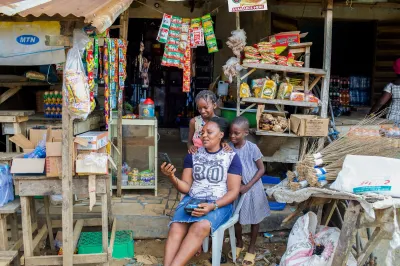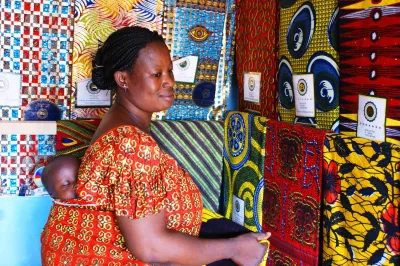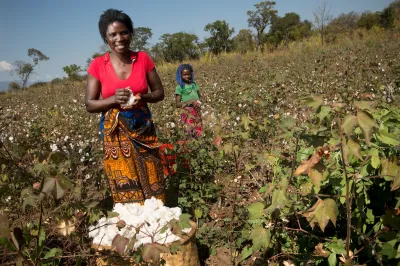Aspirations for Financial Inclusion in Africa
Globally Sub-Saharan Africa (SSA) remains the region with the largest portion of people excluded from formal financial services. Only 12 percent of adults have a bank account, and the situation is most dire in rural areas where the large majority of the 863 million people in Africa live.
CGAP and the Microfinance Information Exchange (MIX) released the 2011 regional snapshot of microfinance analysis and key trends in Sub Saharan Africa. For the first time, broad, comprehensive landscape data is available of close to 23,000 providers of deposit, credit or mobile banking services. In comparison to other regions, SSA has a strong depositor base–almost a quarter of the global depositors recorded by MIX are in SSA, while the region only accounts for five percent of the borrowers. With a large focus on deposit mobilization, MFIs in SSA require a small percentage of external debt. Financial expense ratios are around 2 percent, the lowest globally after the Middle East and North Africa. Large microfinance providers have the lion’s share of client outreach across SSA (between 80 and 90 percent of borrowers and depositors), but they are experiencing slower growth rates compared to smaller institutions.
The presentation produced by MIX and CGAP contains much more information on microfinance in the 45 countries of SSA. But we wanted to dig behind the numbers and also look ahead to what 2012 might bring. To do this, we had a conversation with a group of funders that are part of the Access to Finance working group of the Partnership for Making Finance Work for Africa to discuss key issues for the region. These are not resolutions, nor are they predictions. They are quite simply, four aspirations for the advancement of financial inclusion across the heterogeneous, exciting, and complex continent of Africa. Over the course of 2012, we hope that…
1. Client needs will be far better met
Bringing financial inclusion about in SSA is not just about creating more access or strengthening the supply side. True financial inclusion can only be achieved if services offered are effectively used by clients. It is not just about the numbers. Clients require more appropriate and affordable services that truly meet their diverse needs. And as a greater number of products get to market, clients need enhanced financial capability to make sound decisions and understand the trade-offs among options. The proliferation of Finscope surveys including repeat surveys in countries like Nigeria, Rwanda and Tanzania is promising. Diagnostic studies to better understand the risk management needs of clients and opportunities for extending insurance services are also good news. And there are more efforts on the continent to innovate with new approaches for the improvement of financial capability.
2. Countries will forge a common vision of financial inclusion, covering the breadth of clients, services, and providers.
There are many scattered, and sometimes narrow, perceptions of and initiatives about financial inclusion at the country level, with proponents for certain products – “credit is what will jump-start the livelihoods of poor people” and advocates of specific provider types – “savings groups are the way to reach very poor people effectively.” What is really needed, however, are common visions and strategies for what financial inclusion is, and what it will take to achieve it. Governments and industry stakeholders developing financial inclusion strategies should recognize the full scope of what is needed as well as the continuum from informal finance to commercial bank finance to serve clients’ diverse needs. Linkages across the financial sector should be encouraged.
As the CGAP-MIX analysis shows, SSA has a diverse ecosystem of financial service providers. Credit unions reach the largest numbers of clients, around 20 million (about 30 percent of the total). But there are also many small credit unions with little outreach – – the average credit union in Tanzania has just 170 members, but there are more than 5,300 credit unions. Savings groups have almost 5 million members, primarily in East and West Africa, and in some of the markets, like Ethiopia, their scale is comparable to formal providers. A few mobile network operators, like MTN and Vodafone, have rapidly expanded their supply of payment services on the continent. Africa is the fastest-growing mobile region in the world with a growth rate in number of connections of 19 per cent per year. With close to 620 million connections already in place towards the end of 2011, the main question is how to leverage this powerful channel for the provision of much needed financial services, like savings, insurance and credit. Financial inclusion strategies need to understand this full ecosystem of providers.
3. Financial markets will be healthy and vibrant
The health of the financial sector is of concern in several countries, particularly in West and Central Africa. In the past five years microfinance providers reporting to MIX from SSA have had the highest risk of all regions with a portfolio at risk (median PAR 30) around five percent. While on average there was a slight reduction in PAR in 2010 after a peak in 2009, medium sized microfinance institutions saw PAR go up to above six percent. Many are struggling with the growing pains of increased numbers of depositors and borrowers. In some cases MFIs moving into SME lending suffered because of the new risks associated and loan officers ill-equipped to assess them properly. Supervision of microfinance providers remains a challenge for the region’s central banks. In East Africa, regulators and policymakers are discussing non prudential regulation for credit only MFIs. In Nigeria and in the West African Economic and Monetary Union (WAEMU) the Central Bank applies stricter reporting and accounting rules for microfinance providers. Several governments are taking measures to protect consumers and 27 countries have related laws and regulation in place. This and other measures should help to monitor the health of the sector, but governments and funders also need to learn how to let institutions fail responsibly. This is essential for building a stronger sector trusted by clients.
4. There will be strong capacity as a foundation to reach scale
Profitability levels of MFIs in SSA have gone up and the weighted average returns on assets are slightly positive again after two negative years. This is mostly thanks to providers with the largest outreach (a few big Non-Bank Financial Institutions in East Africa and credit unions in West Africa). Since smaller providers in SSA are less profitable than their peers in other regions, policymakers are placing an emphasis on economies of scale, regional approaches, and consolidation. International holdings and networks are expanding across the continent leveraging centralized support, know-how and skilled human resources. Several funders including DFID, AfDB, KfW and MasterCard Foundation are implementing or developing capacity building funds and programmes to strengthen institutions and market infrastructure to enable providers to grow and reach scale. A long-term, performance-based approach with market vision and smart investment of resources is critical to making difference. Rather than letting a thousand flowers bloom, the region needs stronger players.
A sharp client focus, comprehensive financial inclusion vision, healthy markets, and capacity to reach scale are four aspirations many working on access to finance in Africa share. Making progress on these fronts is the hard work needed. Do these aspirations match yours? What aspirations do you have?




Comments
Namibia should be added to
Namibia should be added to the map of countries developing a specialized MF legal and regulatory regime – with FIRST Initiative funding and the technical input of three of CGAP’s technical experts/policy consultant cadre.
The Bank of Namibia also just
The Bank of Namibia also just made specific commitments under the Maya Declaration. (http://www.afi-global.org/news-and-events/news/bank-namibia-becomes-19t…)
And as for point #2, It would seem that the recently announced African Mobile Policy Initiative (AMPI) coming out of the Zanzibar regional MFS conference is a pretty clear common vision. (http://www.afi-global.org/news-and-events/news/african-central-bank-lea…)
John, Well made point. Did
John, Well made point. Did you know that Namibia has already signed up for the Maya Declaration? Check out what has been going on with the Maya Declaration over at the Alliance for Financial Inclusion (AFI).
Add new comment